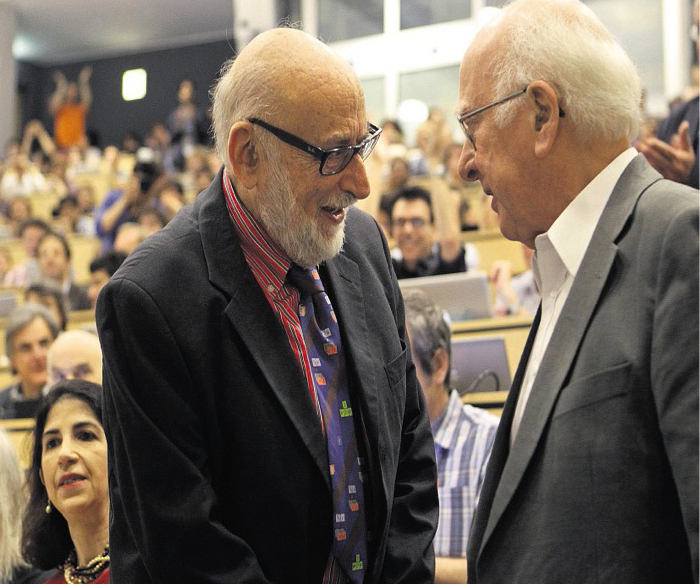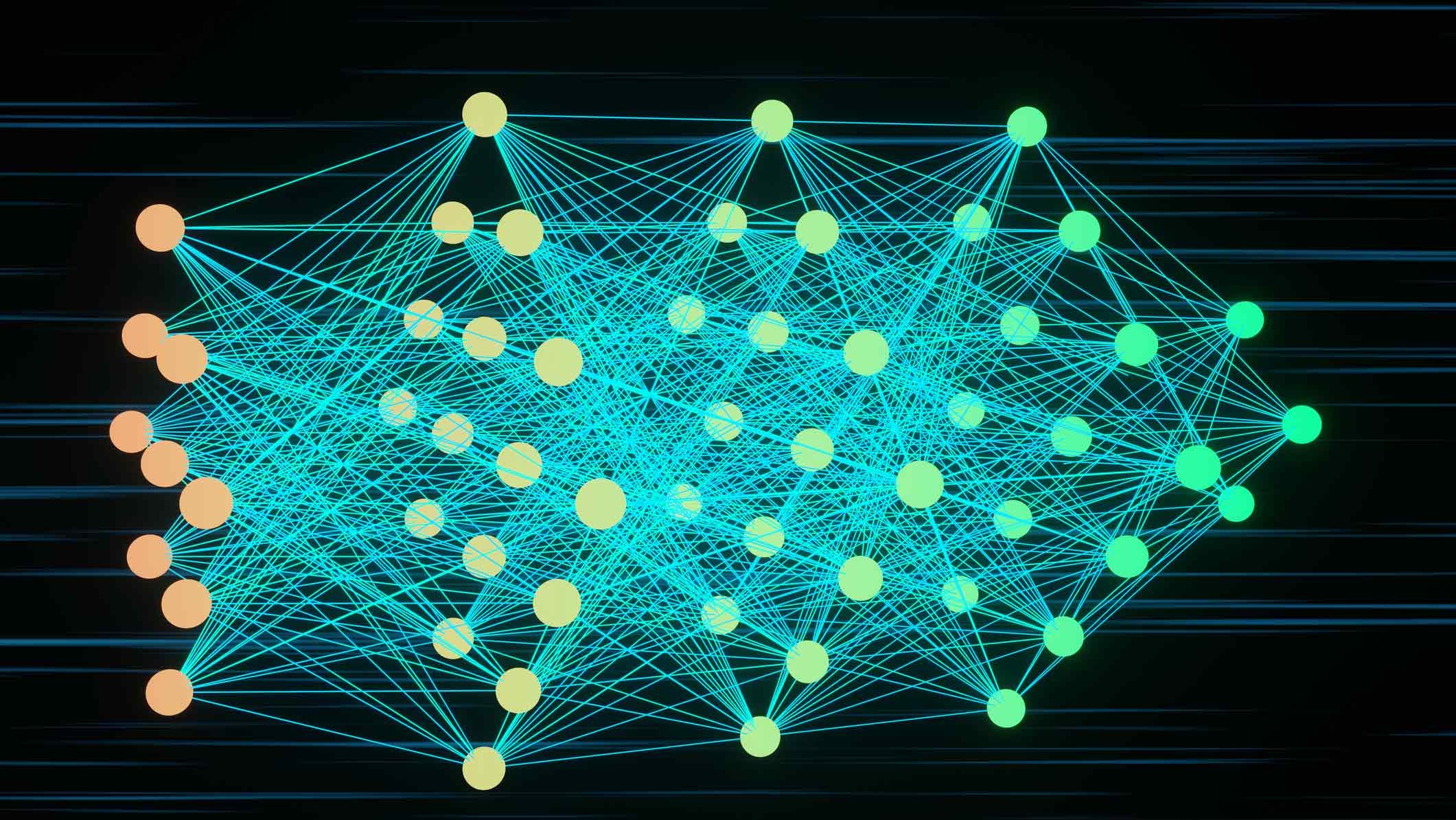
US Scientists Celebrate Nobel Prize for Higgs Discovery
The Royal Swedish Academy of Sciences today awarded the Nobel Prize in Physics to theorists Peter Higgs and François Englert, to recognize their work developing the theory of what is now known as the Higgs field, which gives elementary particles mass. U.S. scientists played a significant role in advancing the theory and in discovering the particle that proves the existence of the Higgs field, the Higgs boson.
In the 1960s, Higgs and Englert, along with other theorists, including Robert Brout, Tom Kibble and Americans Carl Hagen and Gerald Guralnik, published papers introducing key concepts in the theory of the Higgs field. In 2012, scientists on the international ATLAS and CMS experiments, performed at the Large Hadron Collider at CERN laboratory in Europe, confirmed this theory when they announced the discovery of the Higgs boson.
Nearly 2000 physicists from U.S. institutions –– including 89 U.S. universities and seven U.S. Department of Energy laboratories –– participate in the ATLAS and CMS experiments, making up about 23 percent of the ATLAS collaboration and 33 percent of CMS at the time of the Higgs discovery. Brookhaven National Laboratory serves as the U.S. hub for the ATLAS experiment, and Fermi National Accelerator Laboratory serves as the U.S. hub for the CMS experiment. U.S. scientists provided a significant portion of the intellectual leadership on Higgs analysis teams for both experiments.
"It is an honor that the Nobel Committee recognizes these theorists for their role in predicting what is one of the biggest discoveries in particle physics in the last few decades," said Fermilab Director Nigel Lockyer. "I congratulate the whole particle physics community for this achievement."
UC Santa Barbara professor of physics Joseph Incandela was the first U.S. scientist elected to lead the CMS (Compact Muon Solenoid) experiment at the Large Hadron Collider. Last year, he and ATLAS experiment head Fabiola Gianotti made the historic announcement of the discovery of a particle consistent with the Higgs boson.
Additionally, other members of the UCSB High Energy Physics Group, including professors Claudio Campagnari, Jeffrey Richman and David Stuart, were instrumental in the CMS experiments, as well as an army of postdocs, engineers and undergraduate and graduate students.
"We were here waiting for the announcement in the five-story atrium of the famous ‘Building 40' of CERN where many of the physicists from ATLAS and CMS have their offices," Incandela said this morning. "There were several postponements, but then the time finally ticked down and the announcement was made. When they mentioned Francois Englert's name the whole place erupted in applause and shouts. The same was repeated when we heard ‘Peter Higgs' called out. We listened quietly to the speech of the committee and the talk explaining the physics but then everyone just wanted to celebrate. We popped champagne bottles and drank toasts and everyone congratulated everyone. I can safely say that this was a very happy day for the LHC program.
"I was sorry that (Robert) Brout could not be there," Incandela added. "He died in 2010 or 2011, and it is too bad that none of the three Americans were included, but I think that there was no way to make everyone happy and recognize everyone. After all, we experimentalists, by the thousands, devoted 20-plus years to making this discovery possible and we are all happy, even without a Nobel!"
The majority of U.S. scientists participating in LHC experiments work primarily from their home institutions, remotely accessing and analyzing data through high-capacity networks and grid computing. The United States plays an important role in this distributed computing system, providing 23 percent of the computing power for ATLAS and 40 percent for CMS. The U.S. also supplied or played a leading role in several main components of the two detectors and the LHC accelerator, amounting to a value of $164 million for the ATLAS detector, $167 million for the CMS detector, and $200 million for the LHC. Support for the U.S. effort comes from the U.S. Department of Energy Office of Science and the National Science Foundation.
The UCSB team played a large role in the construction of the CMS tracking system, a roughly four-story, 14,000-ton particle tracker with components that were assembled in clean rooms on the UCSB campus. Much of the software used to process and analyze the data gathered by the CMS experiment was written by the UCSB team, and many of the students participating in the experiment graduated and moved on to work with the ATLAS experiment.
"In one generation physicists have built a perfect intellectual structure to describe matter at the smallest scale," said Michael Witherell, UCSB's vice chancellor for research. "The Higgs boson is the keystone of that structure, the central wedge at the top that locks it all together."
"It's wonderful to see a 50-year-old theory confirmed after decades of hard work and remarkable ingenuity," said Brookhaven National Laboratory Director Doon Gibbs. "The U.S. has played a key role, contributing scientific and technical expertise along with essential computing and data analysis capabilities –– all of which were necessary to bring the Higgs out of hiding. It's a privilege to share in the success of an experiment that has changed the face of science."
The discovery of the Higgs boson at CERN was the culmination of decades of effort by physicists and engineers around the world, at the LHC but also at other accelerators such as the Tevatron accelerator, located at Fermilab, and the Large Electron Positron accelerator, which once inhabited the tunnel where the LHC resides. Work by scientists at the Tevatron and LEP developed search techniques and eliminated a significant fraction of the space in which the Higgs boson could hide.
Higgs and Englert published their papers independently, and did not meet in person until the July 4, 2012, announcement of the discovery of the Higgs boson at CERN. Higgs, 84, is a professor emeritus at the University of Edinburgh in Scotland. Englert, 80, is a professor emeritus at Universite libre de Bruxelles in Belgium.
† Bottom image: UCSB physics professor Joe Incandela, head of the CMS experiment, presenting findings at CERN of a particle that appeared to be the highly sought-after Higgs boson in 2012.
CERN photo
Related Links



